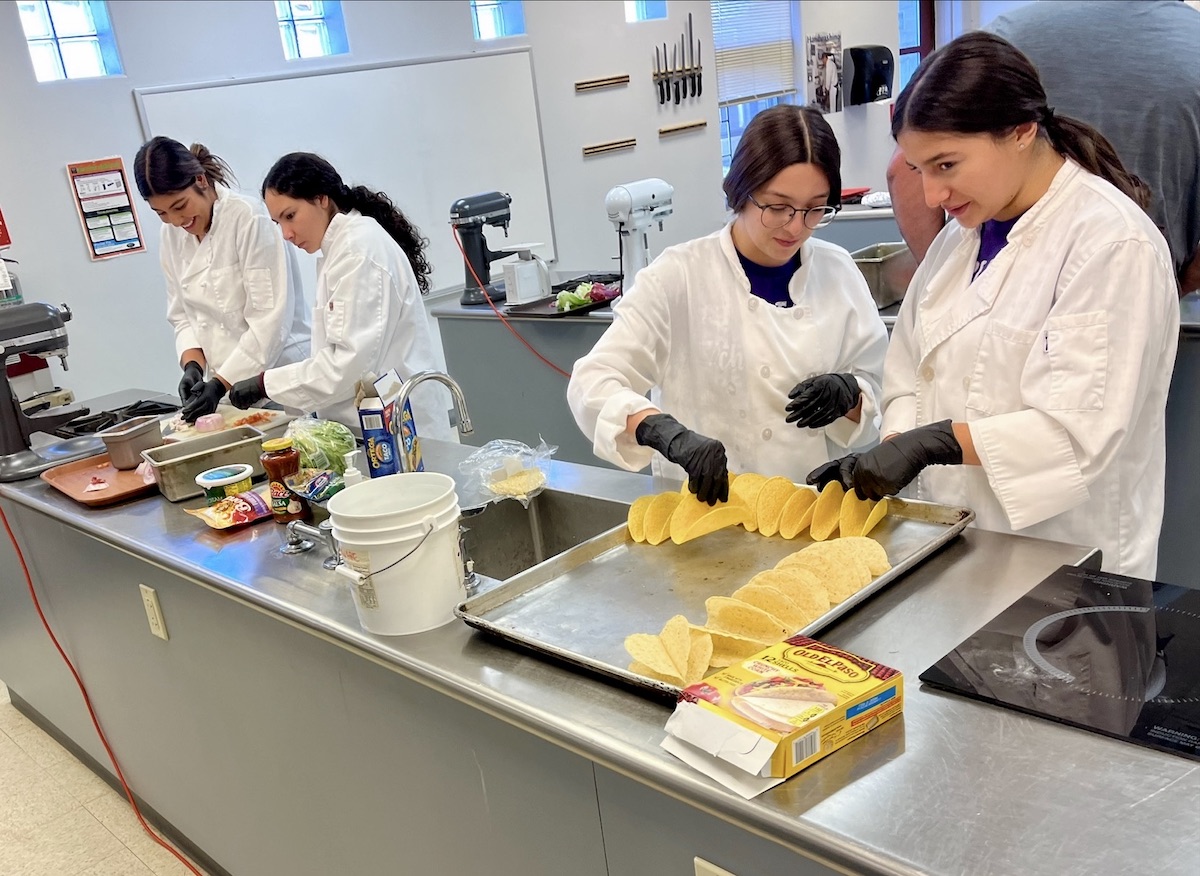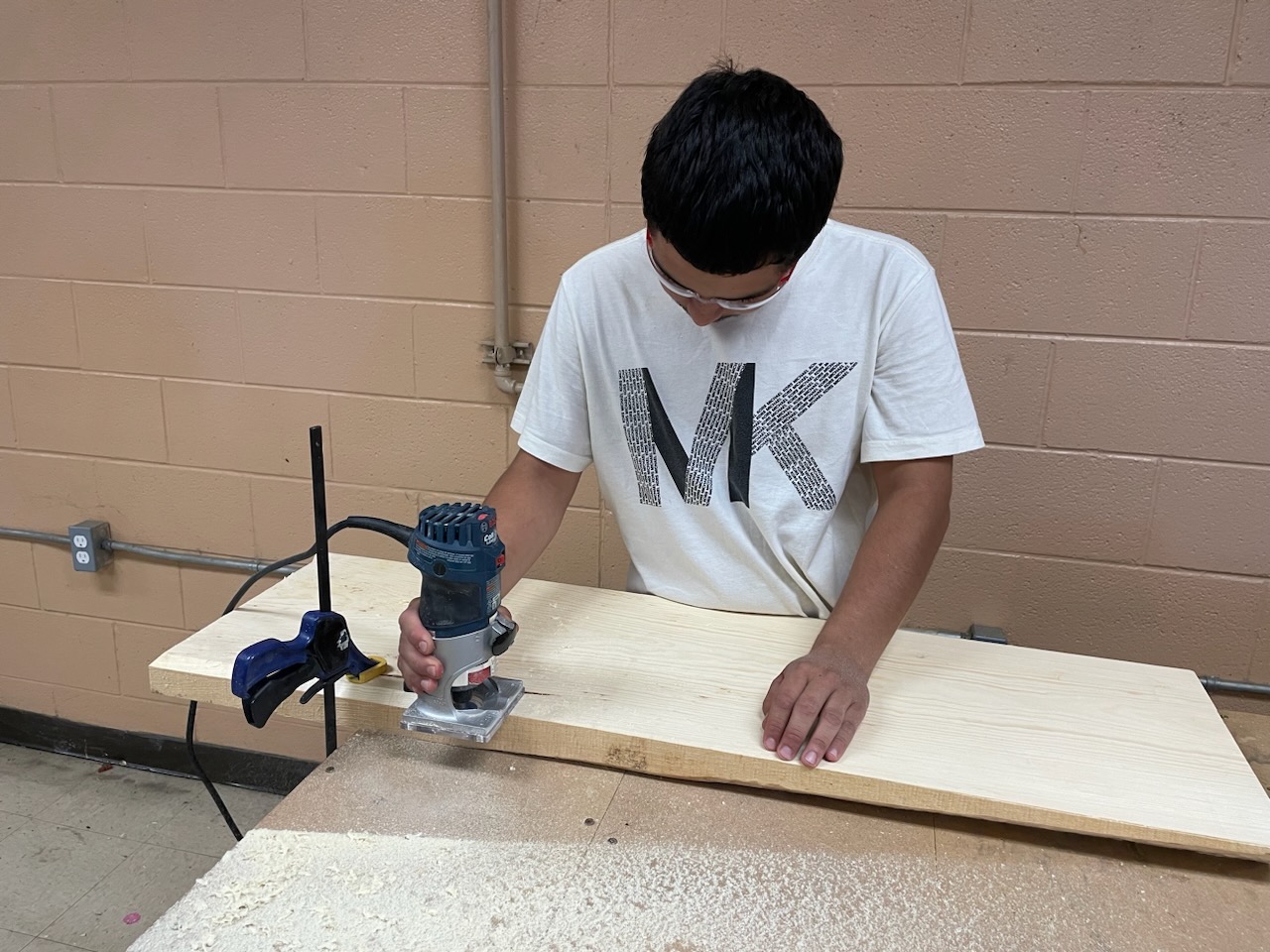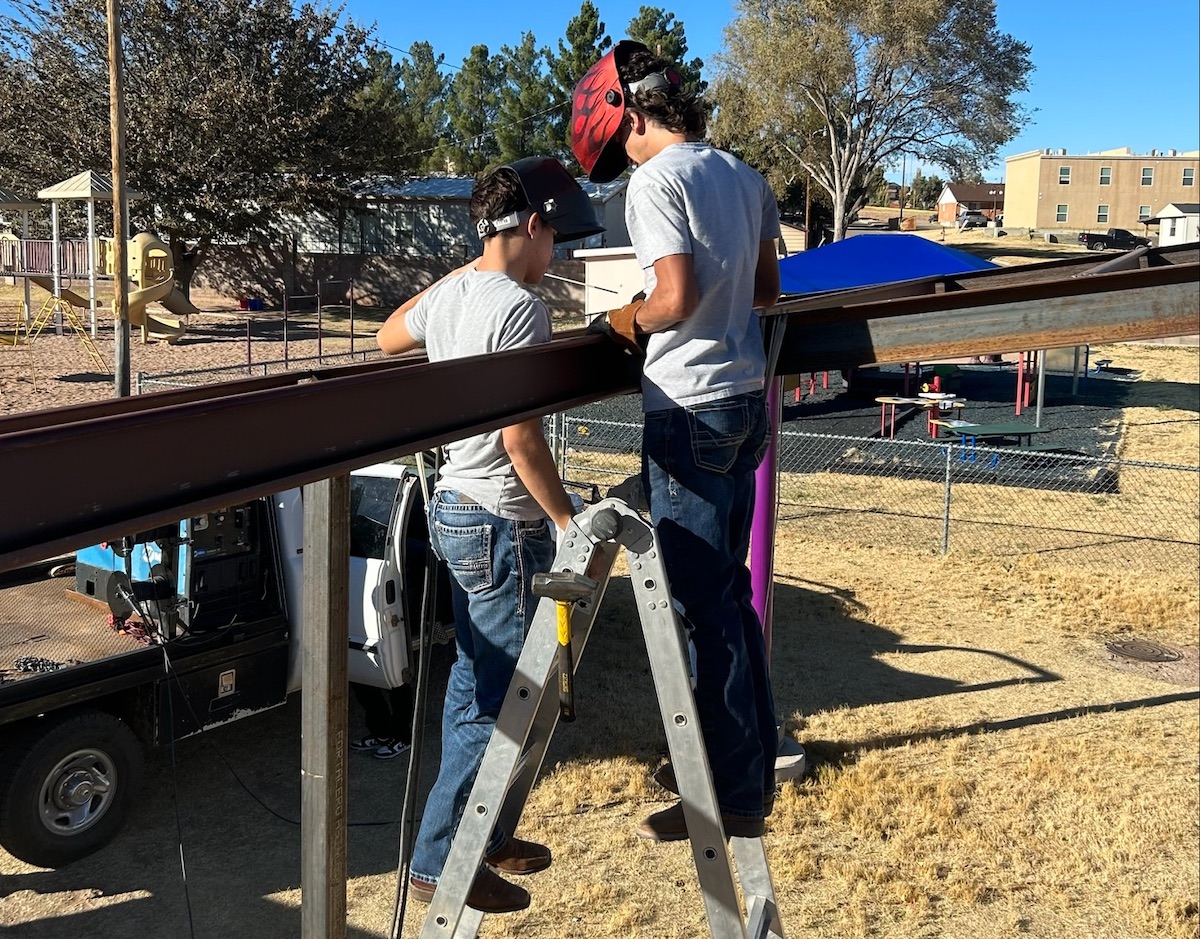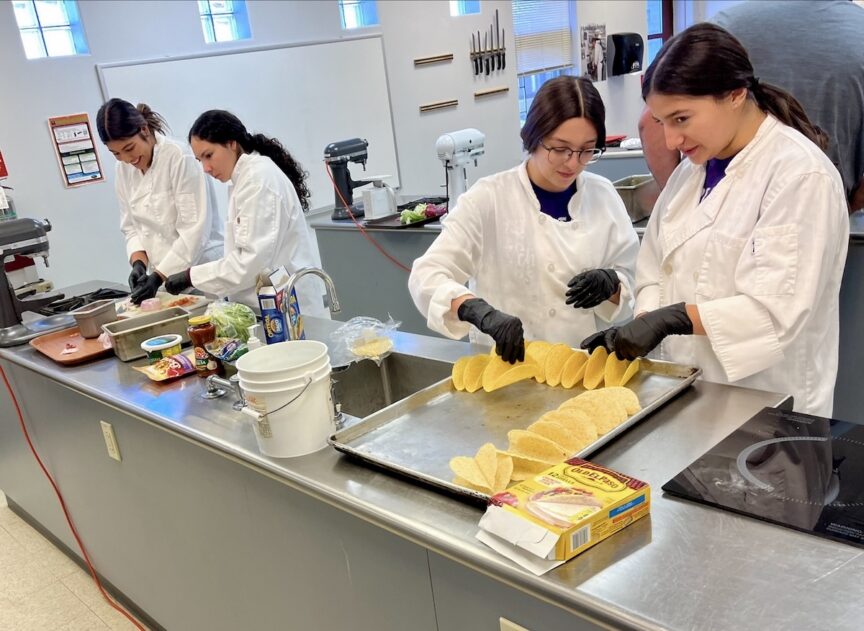CTE Programs in Rural New Mexico Reignite Learning

Culinary students getting hands-on experience in Santa Rosa.
How Santa Rosa is Opening Doors for Students
Welding students at Santa Rosa high school are building impressive resumes before they even apply for jobs. So far the senior class has built a shade structure at the elementary school and a ramp at the Head Start; now, they are building a restaurant front for business students at the high school.
More importantly, the students are also getting paid and earning professional certifications in the process. When they graduate, they will be job-ready. This is part of an ongoing expansion of programs for students at Santa Rosa Consolidated Schools, especially in Career and Technical Education (CTE).
Currently, Santa Rosa High School has 45 interns out of less than 200 students–and only juniors and seniors can do the internships, so a very high percentage of students who can intern are doing so. One of the bigger employers right now is the local hospital, which is working with nine students.
“When you're working out on the job site you learn how to interact with people, how to shake people's hands, how to talk to adults,” says Madrid. “And that is pretty profound because that is one of the things that is lacking that has been conveyed to us by business people, not just around town, but around the state–the lack of soft skills that students have. So they're learning real life skills and that's going to take them a lot further.”
Since Santa Rosa has started this process, they’ve had students who had dropped out of high school decide to come back and finish. Many of them said that if they’d had more opportunities when they were in school, they wouldn’t have quit. The school has also made an effort to reach out to the community to encourage them to come back and graduate. The first year, there were 11 students who came back to finish and overall they’ve had 52 students return. One of the students was 50 years old when he decided to come back.
The effort is backed by the community, but has been spearheaded by Superintendent Martin Madrid and Principal Sharon West.
Martin Madrid grew up in Santa Rosa, graduated from Santa Rosa High School, and moved back after college to work in education there. He’s been working for Santa Rosa Consolidated Schools for 25 years. When he became Superintendent five years ago, he brought on Sharon West as Principal because he wanted someone with “an outside lens and a ton of experience” to help reimagine what was possible.
One of the first big changes they made was to join two other rural districts in developing a virtual program called Tristar. It started during the COVID-19 pandemic and has continued because one of the biggest challenges for rural districts like Santa Rosa is finding instructors.
West came to Santa Rosa with 40 years of experience in education and a national certification in CTE. “It's always been near and dear to my heart,” she says. She approached Madrid about the virtual program because she wanted more options for students.
“We're a rural school,” says West. “We don't need a full-time plumbing instructor, we don't need a full-time welding teacher, whatever the case may be. The whole idea is through virtual, we can zoom people in to actually teach the class and not have to be in our buildings.” It has become a hybrid model so that instructors who don’t live in the area don’t have to travel so far for just a few days a week.
Before, Santa Rosa had woodshop and welding classes, but they didn’t involve certifications, and neither program lasted through COVID. When school was back in person, the new goal was not just getting students experience with things like welding, but getting students on career pathways. The district wanted “to actually put kids on pathways to where they would be successful, even if they don't have a certificate by the time they graduate,” says Madrid.

A student cuts a board with a router saw.
Giving Students Options
In addition to the virtual programs, Santa Rosa now has six CTE pathways that they offer: HVAC and plumbing, welding, business, fine arts, and medical occupations. This year they’re also planning to start a program for future educators called “educators rising.”
Many of these pathways include working with programs like the Business Professionals of America (BPA) or Future Farmers of America (FFA), and HOSA (Future Health Professionals). They also involve community partnerships with the 14 local businesses where students intern.
Santa Rosa also has a robust dual enrollment program through Clovis Community College that Madrid wants people to know is not going anywhere. “We are just pushing career and technical as hard as college and post-secondary now,” he says.
“We need to figure out how to reach the other population that's not interested in dual enrollment,” says Madrid. “We have to make school relevant for those students as well.”
“But I'll tell you, some of those kids that see value in dual enrollment also see value in the CTE portion of it,” he adds. “They can mix and match those and then they have options when they get out.”
The new pathways are about providing more alternatives for students, not forcing them into any one particular track.
“Part of our job is to explain to them what those options are, too,” adds West. “Not just say: you can be a nurse, a doctor, whatever, but what a nurse does, what a doctor does, what a hotel manager does.”
West says the feedback has been extremely positive:
“They are saying to me: ‘the students are so mannerly, they're so polite, they are eager, they are willing.’”
One student has enjoyed her internship so much that she’s requested additional hours and is doing them even though they are unpaid because she is so excited to learn. This is exactly why Santa Rosa has invested so much into these new programs–to get students excited about learning.
Teachers have also been impressed. One of them, who has been there 14 years, told Principal West “Our students have so many more options now.”
“In a small district, you usually have one, maybe one and a half English teachers, one and a half math teachers,” says West. “And so being able to just get through the core classes was hard enough, but being able to give them more, that is really meaningful.”

Santa Rosa interns at the hospital.
Nuts and Bolts
Both West and Madrid speak about the importance of getting creative with finances to accomplish the changes they’ve made in their district.
“One of the things that we've been pretty successful at doing is going after a lot of grants,” says West, “and then getting crafty, braiding those grants together.” Santa Rosa has received Innovation Zone funding from the state, as well as federal CTE funding, and they encourage other rural districts to go after grants and funds, as well as finding other ways to stretch finances.
Madrid got especially creative with his maintenance budget. He brought in an HVAC tech, gave him some teacher training and got him certified, and now students can learn while also helping to maintain the HVAC systems.
“I'm saving the district money as well because I'm able to pay him out of maintenance because he's maintaining our HVAC systems,” says Madrid. “But in the meantime, he's giving hands-on experience to these students.”
They are doing the same thing now with an electrician and looking into expanding in the future.
“We've been fortunate enough to find those people that want to make an impact and pass on their skills to kids because it's no secret that there's a shortage of skilled people out there to do these jobs.”
Madrid and West also emphasize that districts need to be able to provide support to both partners and youth throughout the internship process.
“I think that it is key that we have an ongoing conversation with our community partners rather than stick students there and then we never see them again,” says Principal West.
Students have to turn in a reflection sheet every nine weeks and the school consistently asks students and employers how they can make the program better.
Based on some of this feedback, Santa Rosa is looking to offer Anatomy and Physiology next year and they hope to eventually get Phlebotomy also, so that the students they send to the hospital are more prepared.

Welding interns working at a job site.
Looking Forward
Behind all of these programs and decisions happening in Santa Rosa is a desire for students to be engaged in their education and in their community, to have more choices for their future.
They want young people to be equipped with the educational experiences and social skills they need to succeed at whatever they decide to do with their lives.
“Our goal ultimately, both with the virtual and with the other pathways is to re-engage kids in their education,” says West. “We can't keep doing the same old thing. And that has been the biggest takeaway from this.”
We’re collecting stories from rural districts around the state to highlight the great work they are doing over the next few months. Think your district should be featured? Get in touch!


